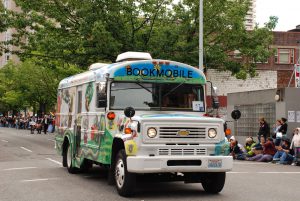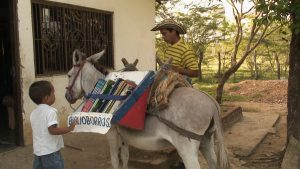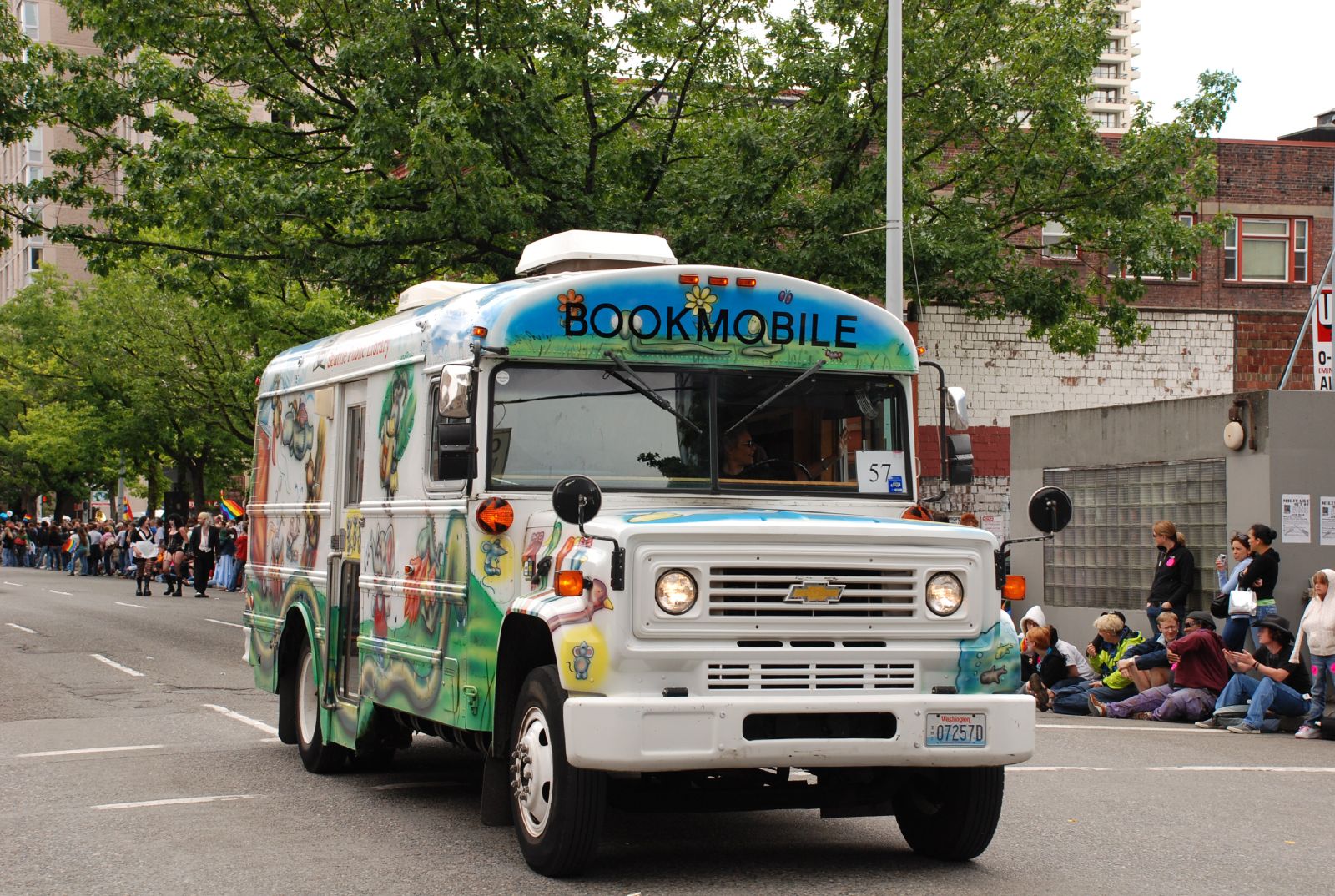Nowadays, obtaining a book or any other material to read is never seen as that big of a deal for many people. The emergence of the Internet has facilitated access to information and reduced the need for printed books significantly. One can simply go online and download almost everything from there. Printed books became mostly supplanted by online book catalogues that provide their users with an opportunity to access or download almost any book they want.
 Public libraries that once used to be essential for the process of education of many individuals do not play a significant role anymore. They seem to gradually become less frequently visited by people in this part of the world. Another type of library, namely mobile libraries, also known as bookmobiles have also become redundant in the developed world in the past few years. The initial purpose of these book-carrying vehicles was to bring literacy to the masses and to facilitate access to books for dwellers of remote areas. Nowadays, illiteracy is not an issue for people, and books can be freely accessed by other means.
Public libraries that once used to be essential for the process of education of many individuals do not play a significant role anymore. They seem to gradually become less frequently visited by people in this part of the world. Another type of library, namely mobile libraries, also known as bookmobiles have also become redundant in the developed world in the past few years. The initial purpose of these book-carrying vehicles was to bring literacy to the masses and to facilitate access to books for dwellers of remote areas. Nowadays, illiteracy is not an issue for people, and books can be freely accessed by other means.
However, this is not the case yet in many countries of the developing world, where people have no schools or other sources of education, where libraries, not to mention the internet, are still a rare sight for many inhabitants, and where the illiteracy rates are strikingly high. In those places, bookmobiles can make a huge difference by providing access to books and encouraging education among the locals.
The situation is especially bad in the remote areas of poor developing countries. Many people in those regions are deprived of educational opportunities, mostly as a result of poverty. Many children there are also forced to work in order to provide for themselves and their families, and cannot go to school for these reasons.
The right to education is one of the fundamental human rights that all people are entitled to and should enjoy freely. It is inconceivable to imagine that somebody cannot read or write in this part of the world today. Yet, illiteracy is still a reality even in the twenty-first century.
According to data provided by the CIA in 2015, the global literacy rate among people older than 15 years old was 86.1%. Literacy levels vary significantly from region to region. Worldwide, around 775 million adults lack minimum literacy skills. While Europe, North America, Australia, and some countries in East Asia score high in the literacy index with more than 99% of their population being literate, many individuals in the developing world still do not have access to education at all. More than three quarters of illiterate people live in countries that are located in the Sub-Saharan Africa region, where around 64% of the overall population is literate, and in South and West Asia, where there is a literacy rate of 70%. The worst situation can be observed in the country of Niger where, according to data provided by UNESCO Institute for Statistics (UIS) in 2015, only about 19% of its adult inhabitants can read and write.
The lack of books is one of the major causes of illiteracy. That means that in order to combat illiteracy, access to books should be facilitated. A bookmobile could be a great tool for educating people and making books available. In several countries where a person cannot come to a library, the library could come to the person.
South Asia’s first bookmobile was launched in 1931. It became instrumental in educating the rural poor. Later, at the beginning of the twenty-first century, a new type of bookmobile that was equipped with a printer, a book binding machine and a satellite dish appeared on the streets of India. For only one dollar, a bookmobile like that can print out a book from its collection, making access to reading materials easier in the regions where no normal libraries are available.
A less advanced kind of a mobile library operates in Kenya. The access to books in this African country is provided by the Camel Library Service. In regions characterised by harsh climatic condition and poor transport infrastructure, camels carry books to children and adults who otherwise would not have access to any library. The project was launched by the Kenyan government in 1996. By 2006, these camel libraries were lending more than 7000 books in English, Swahili and Somali to people in the impoverished North East Province. For many kids in the remote areas of the country, where no television, computers and internet exist, camel libraries became the main source of education as well as entertainment.
Another example of bookmobiles making a change can be found in Zimbabwe. Due to the unstable political and economic situation in the country, many students there have to do without books and other educational facilities. When schools in the outlying corners of the country have no resources to educate people, donkey-drawn bookmobiles play a crucial part in promoting literacy and encouraging the reading culture among citizens.
In Pakistan, the initiative to spread education among children by means of a bookmobile was taken by one of its citizens, Saeed A. Malik, who used to work as an international civil servant with the United Nations for 25 years. He named his project Bright Star Mobile Library. The aim of the project is to provide children with books to evoke their curiosity, promote tolerance, and raise their awareness about the surrounding world. Due to his contacts, Malik managed to get support from the San Francisco Public Library that donated many books for his program that are now being used to educate people in Islamabad. Currently, Malik hopes to expand his program, but it requires more books and monetary donations that are not so easy to obtain.
 As it can be seen, many examples of bookmobiles being used to battle illiteracy and encourage education can be found in several developing countries. Just like Kenya, Colombia uses donkeys to bring books to the country’s inhabitants. In Thailand, elephant-drawn libraries serve the same purpose.
As it can be seen, many examples of bookmobiles being used to battle illiteracy and encourage education can be found in several developing countries. Just like Kenya, Colombia uses donkeys to bring books to the country’s inhabitants. In Thailand, elephant-drawn libraries serve the same purpose.
To sum up, reading and writing are two fundamental skills for fighting illiteracy. Education is a powerful tool that is essential for the exercise of human rights. It can also help people lift themselves out of poverty. Facilitating access to books is the first significant step that can be used to stimulate education and increase literacy rates worldwide. Essentially, a bookmobile can be a powerful tool for promoting education and fighting illiteracy in the developing world, and especially in remote areas, where many people still do not have access to proper education and books. Although, bookmobiles alone might not be enough to battle illiteracy, they can be seen as a good first step to pave the way for a brighter future in the poor countries of the developing world where education is still not easy to obtain.
By Evgenia Isaeva
Image credit:
Picture 1: Ryan Welsh, licensed under CC BY 2.0
Picture 2: Acción Visual/Diana Arias, licensed under CC BY-SA 3.0










